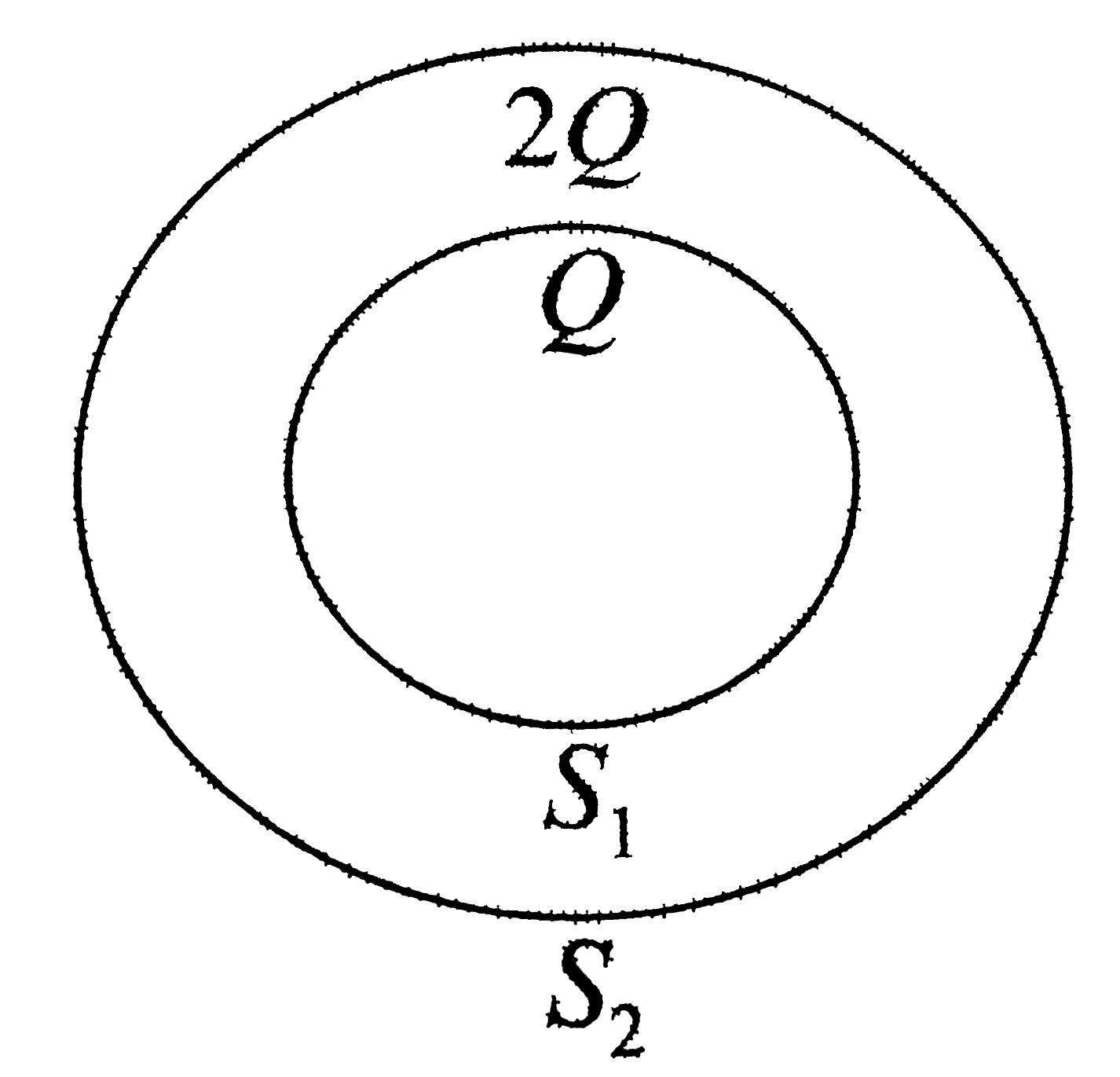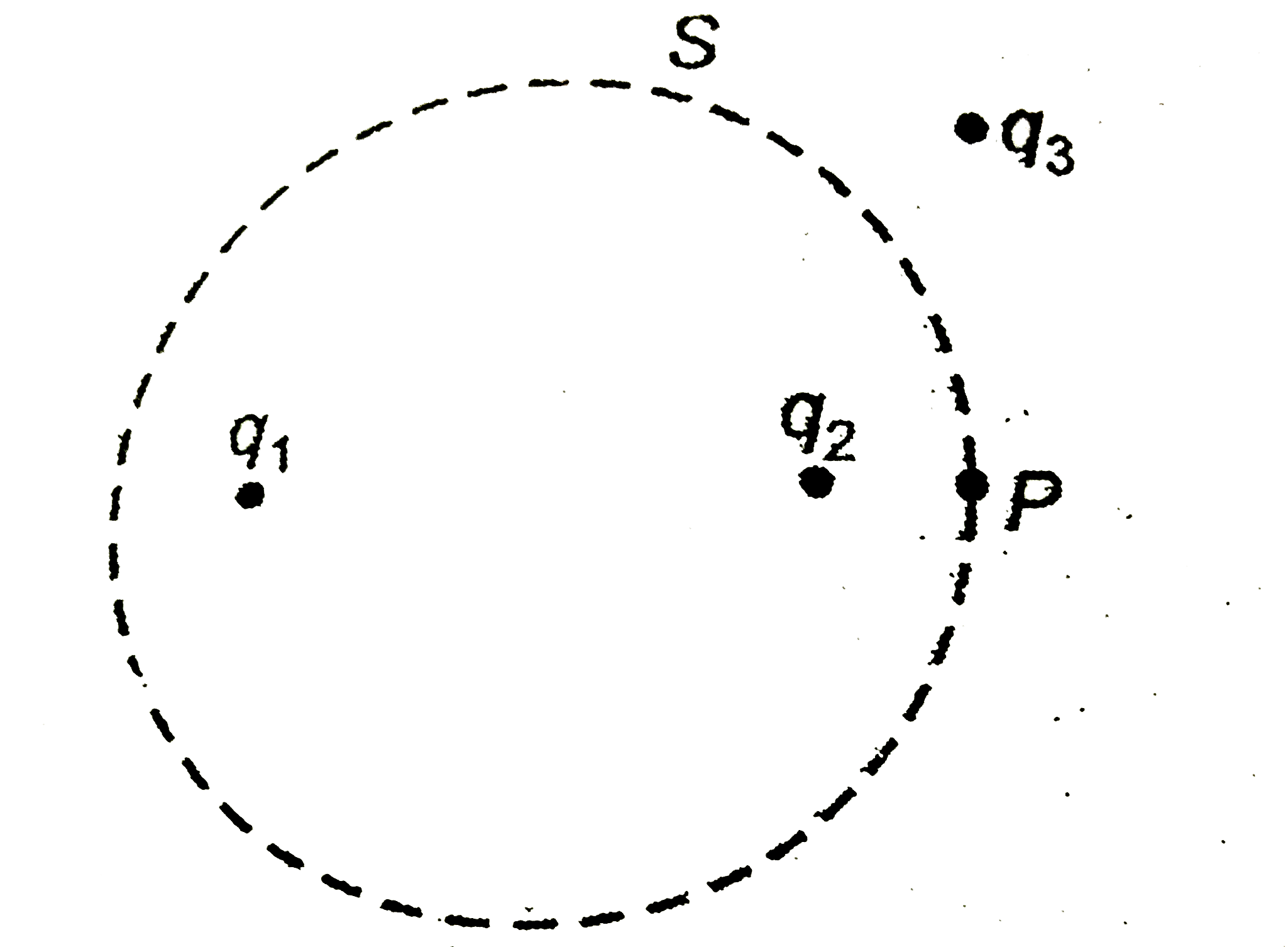Charges Q1andQ2 lie inside and outside, respectively, of a closed surface S. Let E be the field at any point on S and ϕ be the flux of E over S.
If Q1 changes, both E and ϕ will change.
If Q2 changes, E will change but ϕ will not change.
If Q1=0 and q2≠0 then E≠0 but ϕ=0.
If Q1≠0 and Q2=0 then E=0 but ϕ≠0.
The correct Answer is:A, B, C
Step by step video, text & image solution for Charges Q_1 and Q_2 lie inside and outside, respectively, of a closed surface S. Let E be the field at any point on S and phi be the flux of E over S. by Physics experts to help you in doubts & scoring excellent marks in Class 12 exams.
Topper's Solved these Questions
- BOOK - MOTIONCHAPTER - ELECTROSTATICS-IIEXERCISE - Exercise - 2 (Level - II) Section B - Properties of conductors7videos
ELECTROSTATICS-II
- BOOK - MOTIONCHAPTER - ELECTROSTATICS-IIEXERCISE - Exercise - 2 (Level - II) Section C - Spheres problem, Electrostatics pressure4videos
ELECTROSTATICS-II
- BOOK - MOTIONCHAPTER - ELECTROSTATICS-IIEXERCISE - Exercise - 2 (Level - I) Section D - Plates2videos
ELECTROSTATICS-II
- BOOK - MOTIONCHAPTER - ELECTROSTATICS - I EXERCISE - EXERCISE - 4 (Level -II) PREVIOUS YEAR - JEE ADVANCED13videos
ELECTROSTATICS - I
- BOOK - MOTIONCHAPTER - ERRORS , THEORY EXERCISE - EXERCISE 4 (LEVEL -II)10videos
ERRORS , THEORY
Similar Questions
Knowledge Check
- Question 1 - Select One
If charge q1 and q2 lies inside and outside respectively of a closed surface S. Let E be the electric field at any point on S and ϕ be the electric flux over S. Select the incorrect option.
AIf q1 = 0 and q2≠0,then E=0 but ϕ≠0BIf q1 changes,both E and ϕwill changeCIf q2 changes, E will changes but ϕ will not changeDIf q1≠0 and q2≠0,then ϕ≠0 - Question 2 - Select One or More
P i sa point on an equipotential surface S. The field at P is E.
AE must be perpendicular to S in all cases .BE will be perpendicular to S only if S is a plane surface.CE canot have a component along a tangent to S.DE may have a nonzero component along a tangent to S if S is a curved surface. - Question 3 - Select One or More
A point charge Q is placed at the centre of an uncharged conducting shell. Let r be the distance of a point from Q. The point may lie either inside or outside the shell. The electric intensity at the point will be Q/4πε0r2 if the pont lies
Ainside the shell but not outside itBoutside the shell but not inside itCeither inside or outside the shellDclose to either of the surfaces of the shell only
Let E1 and E2, be two ellipses whose centers are at the origin.The major axes of E1 and E2, lie along the x-axis and the y-axis, respectively. Let S be the circle x2+(y−1)2=2. The straight line x+ y =3 touches the curves S, E1 and E2 at P,Q and R, respectively. Suppose that PQ=PR=2√23.If e1 and e2 are the eccentricities of E1 and E2, respectively, then the correct expression(s) is(are):
View SolutionLet E1 and E2, be two ellipses whose centers are at the origin.The major axes of E1 and E2, lie along the x-axis and the y-axis, respectively. Let S be the circle x2+(y−1)2=2. The straight line x+ y =3 touches the curves S, E1 and E2 at P,Q and R, respectively. Suppose that PQ=PR=2√23.If e1 and e2 are the eccentricities of E1 and E2, respectively, then the correct expression(s) is(are):
View SolutionS1 and S2 are two hollow concentric spheres enclosing charges Q and 2Q, respectively, as shown in figure.
i. What is the ratio of the electric flux through S1 and S2?
ii. How will the electric flux through sphere S1 change if a medium of dielectric constant 5 is introduced in the space inside S1 in place of air.
 .View Solution
.View SolutionAssertion :- Upon the displacement of charges within a closed surface the →E at any point on surface doesn't change.
Reason :- The flux crossing through closed surface depends of location of charge within the surface.View SolutionThree point charges are placed as shown in the figure. S is a gaussian surface ϕ is the net flux passing through surface A and E be the electric field at point P on the surface, then
 View Solution
View Solution

